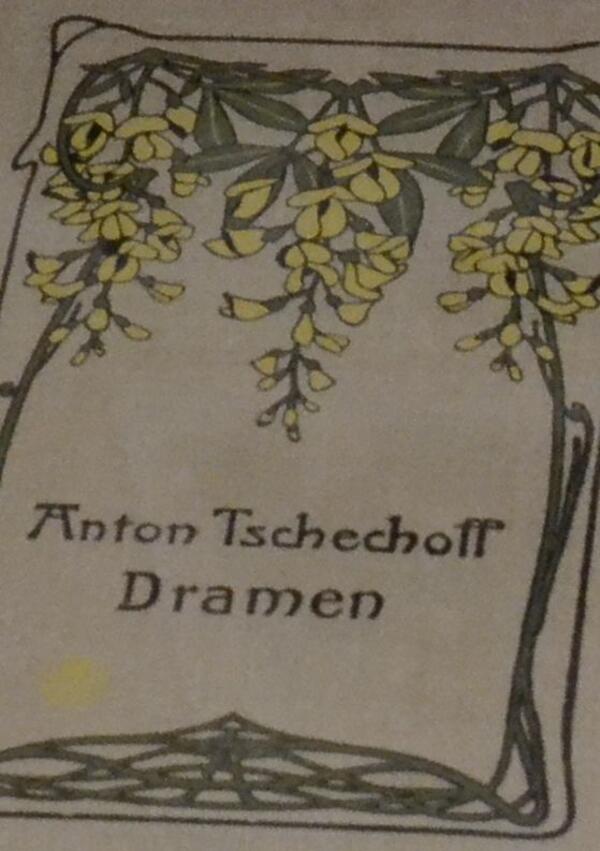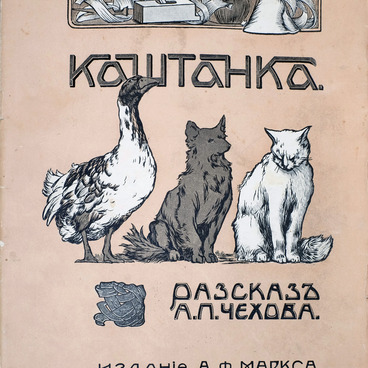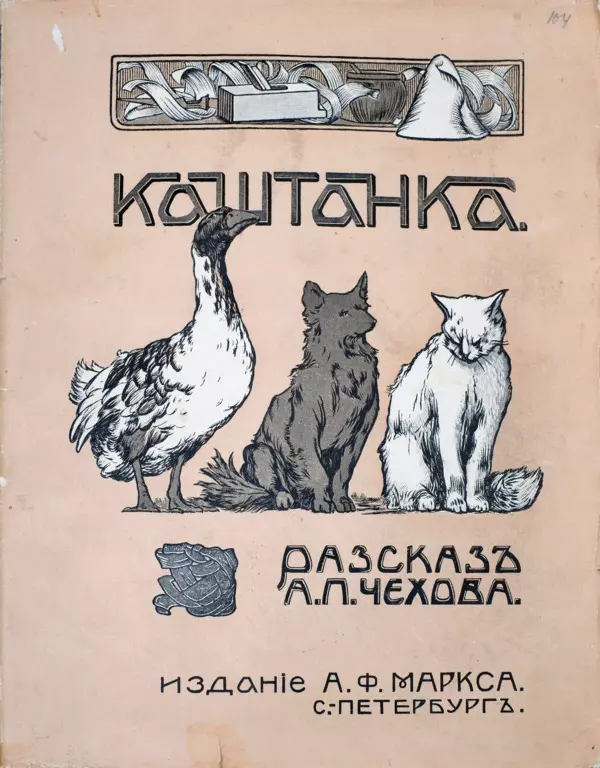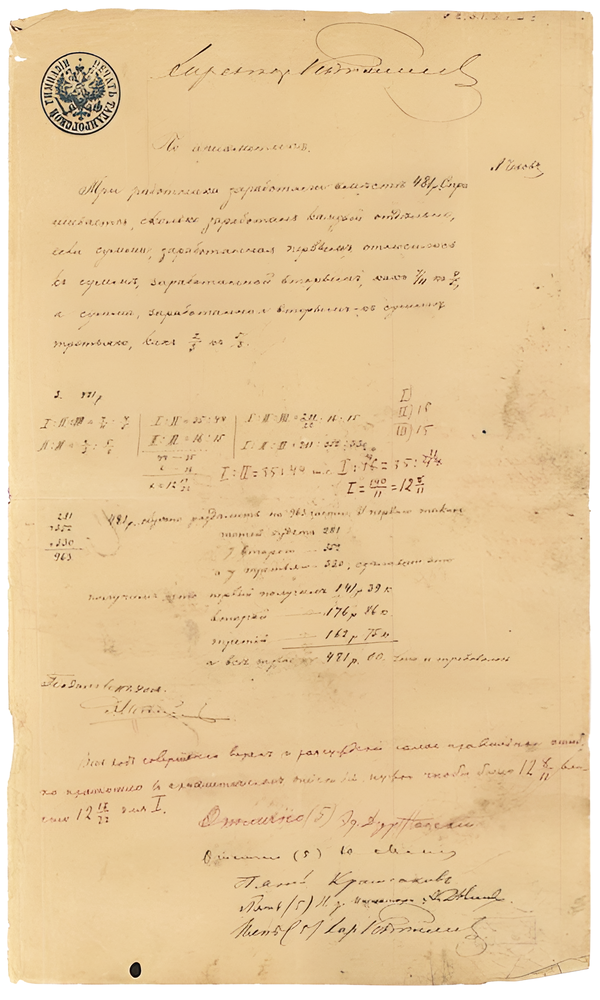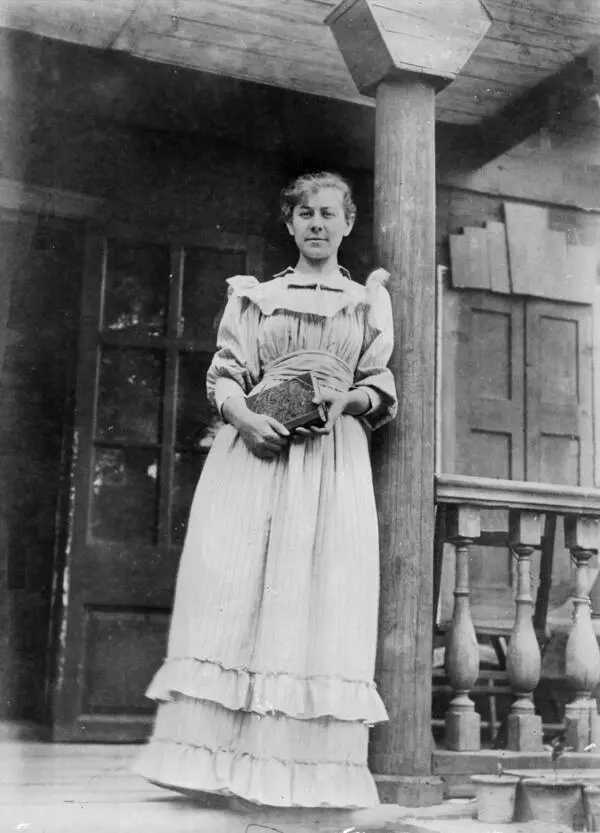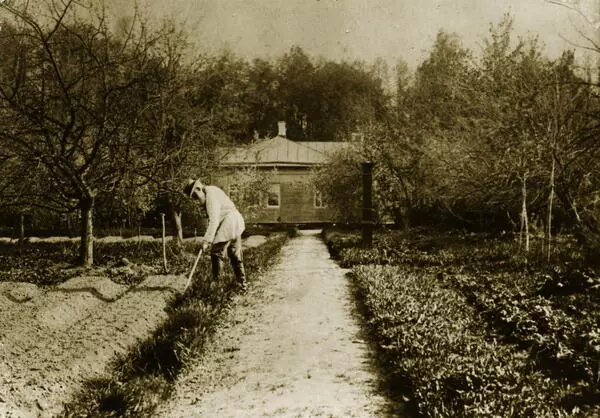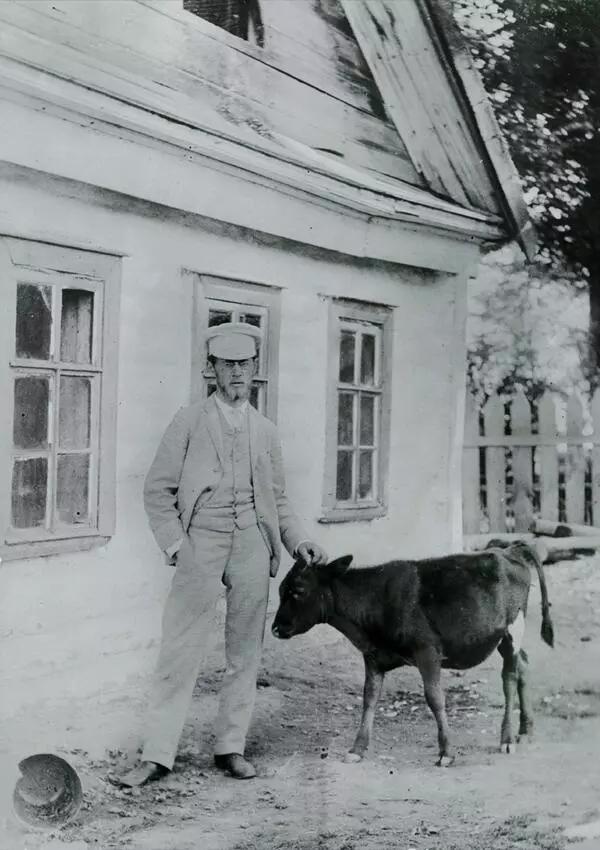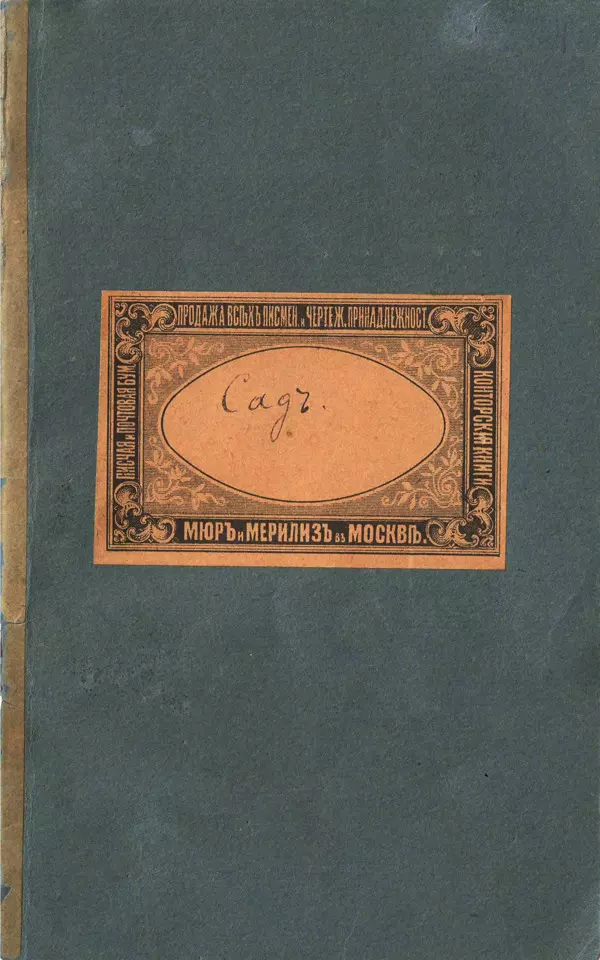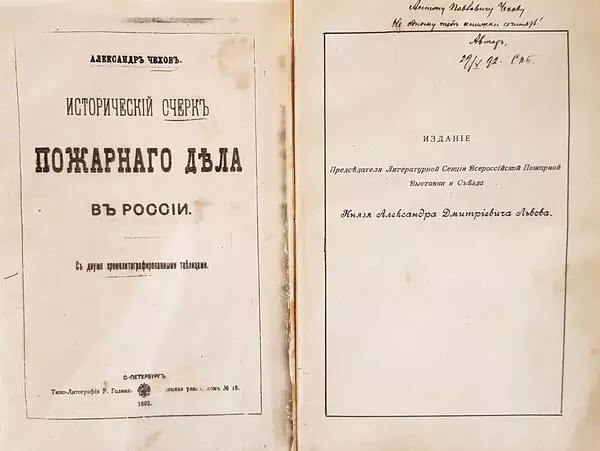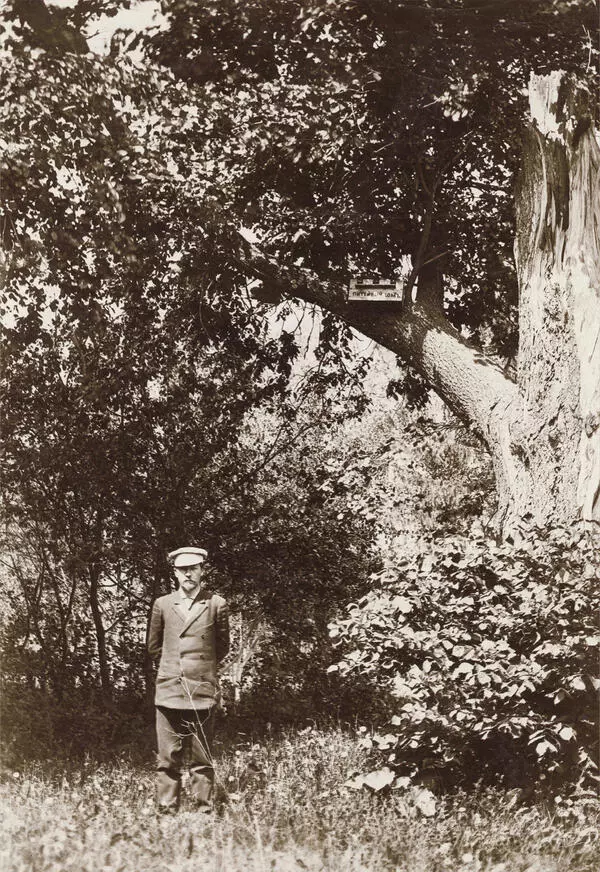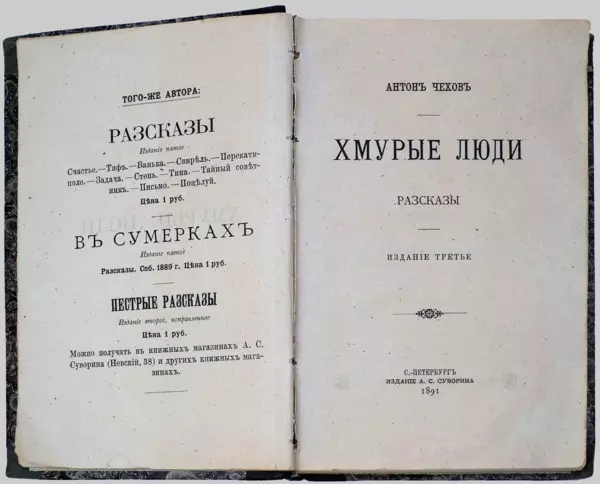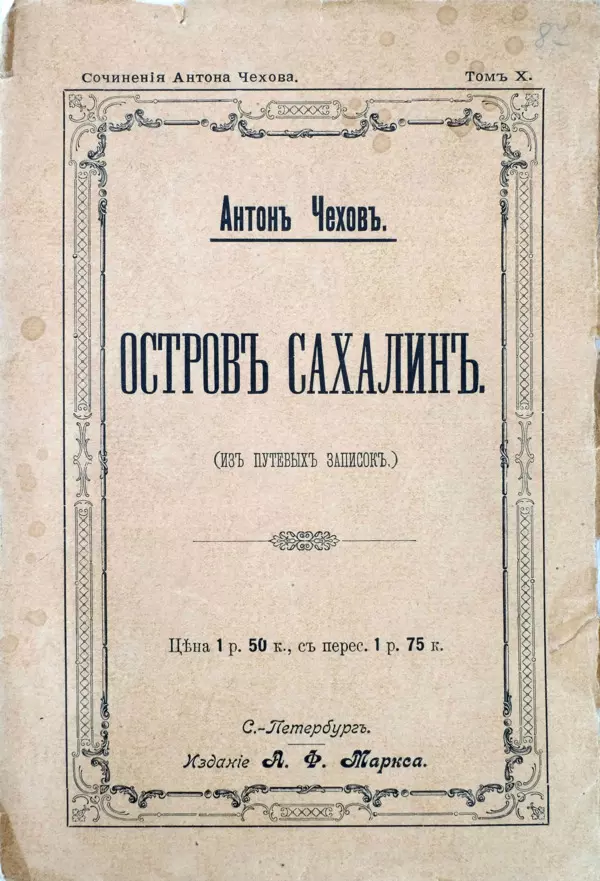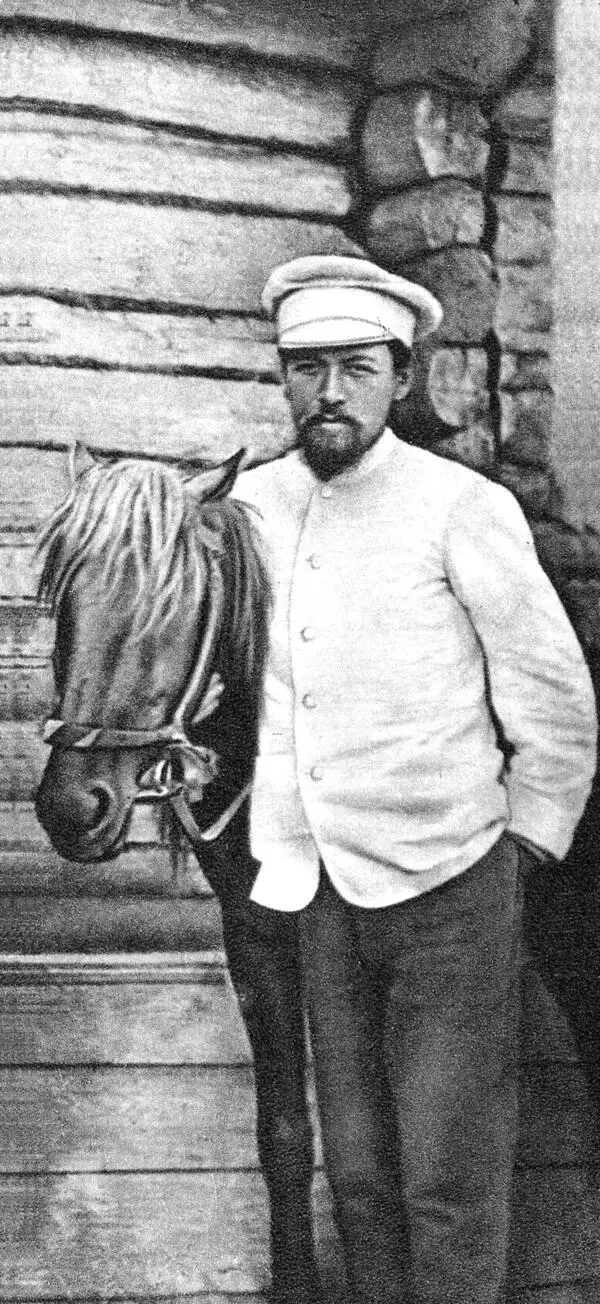The translation of Chekhov’s works into foreign languages took place during the life of the writer. His books were published in English, French, Swedish, German, Norwegian, not to mention the translation into the languages of the Slavic group. The writer’s books were published in India, China, Persia and Japan. So, Anton Pavlovich became the world’s literature celebrity even before his death.
1 / 2
“The Black Monk” in German
Время создания
1903
Место создания
Berlin
Размер
19,3x12,1 cm
19,3х12,1 cm
19,3х12,1 cm
Техника
Paper, offset printing, binding, stitching
Коллекция
2
Открыть в приложении#1
Chekhov A.P.
‘The Black Monk’ in German
#2
#5
#6
Especially a lot of Chekhov’s was translated in Germany. When one of the Anton Pavlovich’s correspondents asked him to send his biography, Chekhov joked in his reply: “Translated into all languages, except foreign ones.” And then he mentioned that the Germans translated him a long time ago, and his books in Czech, Serbian and French also became popular.
There is a bookcase in the Chekhov’s office in Yalta Museum-House, five shelves of which store publications that belonged to the writer personally. Moreover, the books are in the same order in which Anton Pavlovich arranged them. Most of these volumes are works by Pushkin, Lermontov, Gogol, Turgenev, Nekrasov, Tolstoy, Gorky and other Russian classics. Chekhov’s passion for reading manifested itself in childhood. And the beginning of his own library was laid during the writer’s studies at Moscow University.
Anton Pavlovich bought books at second-hand bookmarkets and in shops. The writer marked each purchased edition, displaying his first and last name on the title page. Later, when the library was replenished frequently and in large quantities, the inscription ‘Anton Chekhov’ was no longer put. The books, which the writer acquired after 1888, retained only prints ‘Chekhov’, ‘A. Ch. " or ‘A. Chekhov " on their backbones. And even then, only those that the writer re-binded. During Anton Pavlovich’s residence in Melikhovo and, later, in Yalta, new books were not marked at all.
Chekhov brought no more than 160 books to the Yalta house. Russian classics and medical literature prevailed among them. These books accompanied the writer throughout his adult life and he never parted with these books until his death. On the inside of the cover of some of them there are cards printed in the press with the name, patronymic and surname of the writer (Ex libris). Notes on these books’ pages, made by Chekhov’s hand (crosses, check marks, underlined text) and attached sheets of adversaria are of special interest to the researchers of Anton Pavlovich’s work.
There is a bookcase in the Chekhov’s office in Yalta Museum-House, five shelves of which store publications that belonged to the writer personally. Moreover, the books are in the same order in which Anton Pavlovich arranged them. Most of these volumes are works by Pushkin, Lermontov, Gogol, Turgenev, Nekrasov, Tolstoy, Gorky and other Russian classics. Chekhov’s passion for reading manifested itself in childhood. And the beginning of his own library was laid during the writer’s studies at Moscow University.
Anton Pavlovich bought books at second-hand bookmarkets and in shops. The writer marked each purchased edition, displaying his first and last name on the title page. Later, when the library was replenished frequently and in large quantities, the inscription ‘Anton Chekhov’ was no longer put. The books, which the writer acquired after 1888, retained only prints ‘Chekhov’, ‘A. Ch. " or ‘A. Chekhov " on their backbones. And even then, only those that the writer re-binded. During Anton Pavlovich’s residence in Melikhovo and, later, in Yalta, new books were not marked at all.
Chekhov brought no more than 160 books to the Yalta house. Russian classics and medical literature prevailed among them. These books accompanied the writer throughout his adult life and he never parted with these books until his death. On the inside of the cover of some of them there are cards printed in the press with the name, patronymic and surname of the writer (Ex libris). Notes on these books’ pages, made by Chekhov’s hand (crosses, check marks, underlined text) and attached sheets of adversaria are of special interest to the researchers of Anton Pavlovich’s work.
#7
Ministry of Culture of the Russian Federation
читать дальшескрыть
00:00
00:00
1x
“The Black Monk” in German
Время создания
1903
Место создания
Berlin
Размер
19,3x12,1 cm
19,3х12,1 cm
19,3х12,1 cm
Техника
Paper, offset printing, binding, stitching
Коллекция
2
Открыть в приложении
Поделиться

